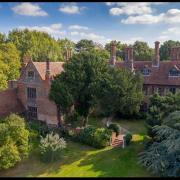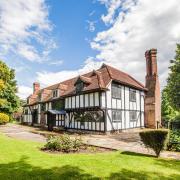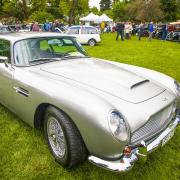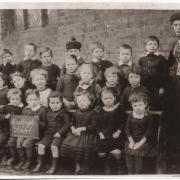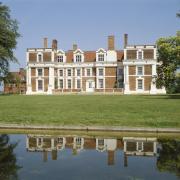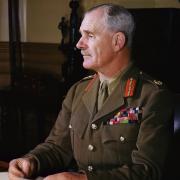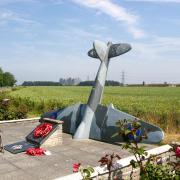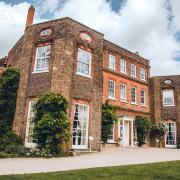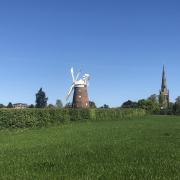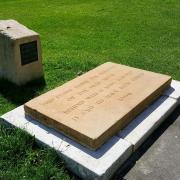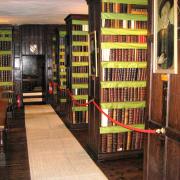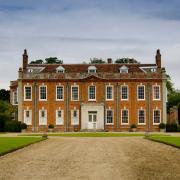When it was sold a few years ago, Savills described Rivenhall Place as ‘one of the finest houses in Essex.’ With its rich history, beautiful proportions and stunning parkland it is easy to see why. Rivenhall Place is Grade II listed and set in 70 acres of parkland that was designed by the celebrated landscape designer of his day, Sir Humphrey Repton.
Eustace III of Boulogne, who was born in 1050 and fought in the crusades, passed Rivenhall Place on to his daughter, Matilda, who went on to marry Stephen, King of England. The couple were the second wealthiest in England, save for the ruling King and Queen of the day (Stephen came to the throne ten years after their marriage). Matilda played a large part in running their estates in Kent and Boulogne. She brought vast lands into their marriage, which enabled her husband to secure a major trade route between England and France.

From the 13th century the Scales family were the custodians of Rivenhall Place, until the seventh Lord Scales, Thomas, a military commander, was murdered by boatmen and left on the shore at Southwark as he was trying to hold London for King Henry VI. During the famous War of the Roses, he fought for the Lancaster side. For this – as well as his immense wealth – Scales was mentioned in Shakespeare’s Henry VI part 2. He also played a prominent role in the struggle against Joan of Arc in the 15th century.
Scales had two children, a boy who sadly died in infancy and a girl, Elizabeth, who married Anthony Woodville, Earl Rivers. Rivers was the brother of the wife of the ruling King Edward IV. After the king died, Rivers, like his predecessor Scales, also met a sticky end and his death warrant was signed by the next king, Richard III, amid yet another power struggle.
The house then passed to the Gates family who owned it until 1553 when Sir John Gates was executed. Sir John was an English courtier, soldier and politician. He was decapitated for his involvement in the attempt to install the protestant Lady Jane Grey on the throne and was executed for high treason under Mary I.
It is said that Anne of Cleves, fourth wife of King Henry VIII, spent the night before their wedding at Rivenhall. To quote Savills, ‘Certain wooden panels in the house, decorated with tulips, lend further credence to this story since, although she was a German princess, she dressed in the Dutch ornate fashions popular in Germany at the time.’

Queen Mary, daughter of King Henry VIII, then gave Rivenhall to Susan, widow of Thomas Tonge, who was her lady in waiting and great friend. She is thought to have been a devious and greedy operator and adept at securing gifts for Queen Mary, which then had a habit of coming her way! Since Susan had no children, the house then passed to her nephew George White of Hutton.
In 1590, the house was sold to Ralph Wiseman, a Catholic whose family lived there until 1692. The estate was then purchased by Thomas Western. Western was a wealthy man – an iron founder who supplied timber for King Charles II navy. He also married well, which one can only imagine helped bolster the bank balance.
Western's great friend Rev. William Cole the antiquary used to come and stay. Cole was a fairly eccentric character and suffered from gout. This might have been down to his appreciation of the finer things in life! Rev. Cole kept a collection of animals, including horses, a pony, a dog called Busy, a cat and a pony. I wonder if he brought his menagerie with him when he went to stay at Rivenhall? Their friendship is immortalised in a painting by Hogarth in the 18th century.
Sadly, Thomas’s son Charles died in his twenties when an awful accident occurred in his horse-drawn carriage. The horse bolted and Charles died as he leapt out of the carriage leaving his son, a child of just four years old, as the heir and future Lord Western. This child, Charles Callis, went on to become a liberal politician and MP for Maldon.
Lord Western sat in the House of Commons for 42 years and when he was voted out, he was made Baron Western in 1833. During this time Western made reforms for prisoners and protected the domestic price of corn against foreign competition. He also bred the Essex pig, which was sold at home and abroad as ‘Lord Western’s Essex Pig’.

Lord Western preferred to live at Felix Hall in Kelvedon, which for a parliamentarian made sense as it was closer to the station. Felix Hall mansion burnt down last century and the ruins were sold around ten years ago. Rivenhall was rented out to Sir John Page Wood, whose son, Field-Marshal Sir Evelyn Wood, also lived there. The house was occupied by soldiers in both world wars.
As for the building itself, Rivenhall was originally a Tudor house made up of two wings, which like many others, was built on and expanded in the Georgian style. This can be seen most notably in the east and south elevation. However, there are still glimpses of the Tudor era – take the octagonal chimneys for instance, as well as the mullioned windows and panelling inside the house.
Though the main staircase is more modern (it was built for Lord Western and was mentioned in Pesvner’s book The Buildings of England in 1700), the back staircase is much older. The central post on the back staircase is part of a ship’s mast that runs from the top to the bottom of the house, no less. That, in my mind, completes Rivenhall Place as the ultimate Tudor dream.




